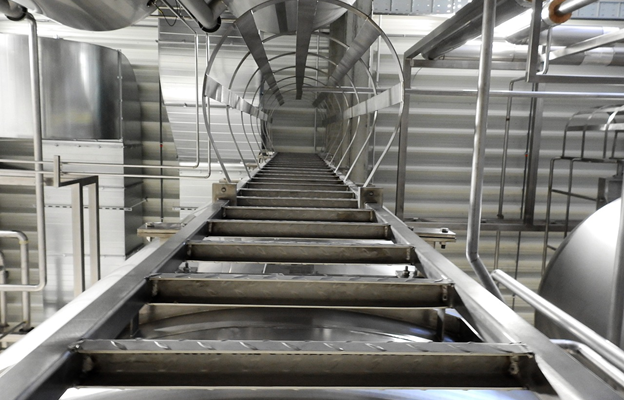Stainless steel gas pipes are a critical component in many industrial, commercial, and residential gas distribution systems. Their durability, corrosion resistance, and strength make them an ideal choice for transporting natural gas, propane, and other gases safely and efficiently. However, the performance and safety of these pipes significantly depend on the proper installation techniques. This blog explores the importance of correctly installing stainless steel gas pipes and provides guidelines to ensure a safe and effective gas piping system.
Understanding Stainless Steel Gas Pipes
Stainless steel gas pipes are made from an alloy of iron, chromium, nickel, and other metals. The presence of chromium provides excellent corrosion resistance, while nickel adds to the durability and strength of the pipes. These properties make stainless steel an ideal material for gas piping, as it can withstand harsh environmental conditions, high pressures, and temperatures.
Key Advantages of Stainless Steel Gas Piping
- Corrosion Resistance: Stainless steel resists rust and corrosion, even in moist or corrosive environments, ensuring the longevity of the gas piping system.
- Strength and Durability: Stainless steel pipes can handle high pressure and stress, reducing the risk of leaks and ruptures.
- Hygienic Properties: Stainless steel is easy to clean and does not support the growth of bacteria, making it suitable for applications where hygiene is crucial.
- Aesthetic Appeal: The sleek, polished appearance of stainless steel adds a professional look to installations in visible areas.
The Importance of Proper Installation Techniques
The benefits of stainless steel gas pipes can only be fully realized through proper installation. Incorrect installation can lead to leaks, system failures, and safety hazards. Here are several reasons why proper installation techniques are essential:
1. Safety
Safety is the most critical aspect of any gas piping system. Improper installation can result in gas leaks, which pose a significant risk of fire, explosion, and poisoning. Ensuring that all connections are secure and that pipes are properly supported and protected can prevent such hazards.
2. Efficiency and Performance
Proper installation techniques ensure that the gas piping system operates efficiently. Incorrectly installed pipes can cause pressure drops, reduce flow rates, and lead to uneven gas distribution. This can affect the performance of gas-powered equipment and appliances.
3. Longevity of the System
A well-installed stainless steel gas piping system will last longer and require less maintenance. Properly securing and supporting the pipes prevents mechanical damage, vibration, and wear, which can extend the system’s lifespan.
4. Compliance with Standards
Adhering to industry standards and local regulations is crucial for the legality and insurance of the installation. Proper installation techniques ensure compliance with codes and standards, avoiding potential legal and financial repercussions.
Key Installation Techniques for Stainless Steel Gas Pipes
1. Planning and Design
Before beginning the installation, it’s essential to plan and design the piping system carefully. This includes:
- Assessing Requirements: Determine the gas type, flow rate, pressure requirements, and environmental conditions.
- Sizing the Pipes: Select the appropriate pipe size, such as 35mm stainless steel pipe, to meet the system’s needs without causing excessive pressure drops.
- Layout Design: Design the piping layout to minimize the number of bends, fittings, and joints, which can reduce the risk of leaks and pressure loss.
2. Proper Support and Anchoring
Supporting and anchoring stainless steel gas pipes correctly is crucial to prevent sagging, vibration, and movement. Use appropriate pipe supports and clamps, and ensure they are spaced correctly according to the pipe size and weight. Proper support reduces mechanical stress and the risk of joint failures.
3. Secure Connections
Ensure all connections are secure and leak-free. Use high-quality fittings and follow the manufacturer’s guidelines for tightening and sealing. For threaded connections, use appropriate thread sealants or tapes designed for gas applications. Avoid over-tightening, which can damage the threads and cause leaks.
4. Avoiding Cross-Contamination
Prevent cross-contamination by ensuring the gas pipes are clean and free from debris before installation. Any foreign material inside the pipes can cause blockages and affect the system’s performance. Use clean tools and handle the pipes with care to maintain cleanliness.
5. Thermal Expansion and Contraction
Stainless steel expands and contracts with temperature changes. Account for thermal expansion and contraction by including expansion joints or loops in the piping system. This prevents stress on the pipes and joints, reducing the risk of damage and leaks.
6. Pressure Testing
After installation, perform pressure testing to ensure the system is leak-free and can handle the operating pressure. Use an inert gas like nitrogen analyzer for testing, as it is safe and non-reactive. Follow the relevant standards and guidelines for pressure testing procedures.
7. Proper Insulation
In environments where temperature variations are significant, insulate the stainless steel gas pipes to prevent condensation and heat loss. Proper insulation maintains the efficiency of the system and protects the pipes from external damage.
8. Adhering to Codes and Standards
Ensure the installation complies with local building codes, industry standards, and manufacturer specifications. This includes following guidelines for pipe sizing, material selection, installation practices, and safety measures.
Common Challenges and Solutions in Stainless Steel Gas Piping Installation
1. Handling and Bending
Stainless steel pipes are rigid and can be challenging to handle and bend. Use appropriate tools and techniques for bending and shaping the pipes. Pre-fabricated bends and fittings can simplify the installation process.
2. Avoiding Galvanic Corrosion
When stainless steel pipes come into contact with dissimilar metals, galvanic corrosion can occur. Prevent this by using appropriate insulation or non-conductive materials at joints and connections between different metals.
3. Ensuring Proper Sealing
Achieving a proper seal in stainless steel gas piping can be challenging due to the hardness of the material. Use high-quality sealants and follow best practices for threading and sealing to ensure leak-free connections.
4. Addressing Vibration and Movement
In applications where vibration or movement is common, such as industrial settings, ensure the pipes are adequately supported and anchored. Use flexible joints or connectors to absorb vibrations and prevent stress on the piping system.
Conclusion
Proper installation techniques are vital for the safety, efficiency, and longevity of stainless steel gas pipes. By following best practices and adhering to industry standards, you can ensure a reliable and effective gas piping system that meets the specific requirements of your project.
From careful planning and design to secure connections and pressure testing, each step in the installation process plays a crucial role in the overall performance of the system. Whether you are working on a residential gas line, a commercial building, or an industrial facility, investing time and effort into proper installation techniques will pay off in the long run.
Stainless steel gas piping offers numerous advantages, including corrosion resistance, strength, and durability. By choosing the right materials, such as a 35mm stainless steel pipe for specific applications, and employing correct installation methods, you can achieve a high-performing and safe gas distribution system that stands the test of time.




